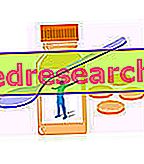Related articles: Huntington's disease
Definition
Huntington's disease is an inherited disorder characterized by the progressive degeneration of specific areas of the brain.
The cause is a mutation in the IT15 gene, located on chromosome 4 (4p16.3), which produces an abnormal repetition of the CAG sequence (cytosine-adenine-guanine) in the DNA. This triplet, based on the genetic code, codes for the amino acid glutamine. As a result, the abnormal protein produced by the pathological gene, called huntingtin (HTT), has a polyglutamine tail at the terminal level, which causes the disease over a lifetime. In particular, the caudate nucleus becomes atrophied and neurons in the striatum degenerate. Neurons at the level of the cerebral cortex (external part of the brain) are also involved to varying degrees.
The greater the number of CAG triplets, the earlier the onset of the disease and the more serious the symptoms. Furthermore, it is to be considered that the number of repetitions can increase in subsequent generations and, with time, can lead to the appearance of a more serious phenotype within a family.
Huntington's disease can be transmitted from one generation to another in an autosomal dominant manner. This means that both males and females can be affected in the same way (since the mutation is not on the sex-determining chromosome); furthermore, it is sufficient to have only one copy of the pathological gene, deriving from one of the two parents, to inherit the disease.
Most common symptoms and signs *
- abulia
- akinesia
- Aphasia
- Aggression
- anhedonia
- Apathy
- Apraxia
- Ataxia
- athetosis
- Muscular atrophy and paralysis
- bradykinesia
- Korea
- Dementia
- Depression
- Difficulty concentrating
- Language difficulties
- Dysarthria
- Dysphagia
- Temporal and spatial disorientation
- Mood disorders
- ecolalia
- Insomnia
- hypokinesia
- undernourishment
- myoclonus
- Memory loss
- Loss of coordination of movements
- Loss of balance
- Weight loss
- Loss of memories
- Joint stiffness
- Muscle spasms
- Tic
- Tremors
Further indications
Huntington's disease is characterized by involuntary movements (chorea), psychiatric disorders and loss of cognitive abilities. The symptoms progress insidiously and vary greatly from person to person. Onset is more frequent in adulthood (between 30-45 years), but may become evident at any age.
Huntington's disease has a worsening trend, so the symptoms become more pronounced during the progression of the disease.
The first obvious signs include a slight disturbance of motor coordination, with mild and sporadic face, limbs and trunk. Over time, gait becomes staggering, abnormal postures and choreographic movements, exaggerated and uncoordinated, can become very pronounced.
In the advanced phase of Huntington's disease, rigidity (eg stiff neck), bradykinesia (slowing of movement), dystonia (persistent muscle contractures) and inability to sustain a motor act appear. Common symptoms are also dysarthria (slowing and disorganization of language) and difficulty swallowing.
Before or simultaneously with movement disorders, mood alterations and cognitive abilities decline (thinking, judgment, memory). In Huntington's disease, psychiatric symptoms such as depression, irritability, anxiety and apathy are very common. Furthermore, behavioral disorders (aggressiveness, personality changes and social isolation) can occur.
In later stages, Huntington's disease progresses, making walking practically impossible and causing severe dementia. Death usually occurs 15-25 years after the onset of symptoms, following cardiac complications and ab ingestis pneumonia.
The diagnosis involves the evaluation of the typical symptomatology associated with a positive family history and is confirmed by genetic testing. Neuroimaging investigations, such as MRI (nuclear magnetic resonance) and CT (computerized axial tomography), are performed to exclude other pathologies.
At present, therapies capable of curing or interrupting the course of the disease are not yet available. Therefore, the treatment includes supportive measures to alleviate the symptoms and improve the patient's quality of life. Chorea and agitation, for example, can be partially suppressed with drugs that act as a blocker or a depletion of dopamine receptors.



